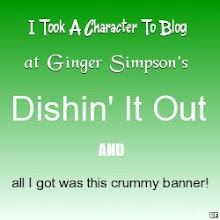
What do veterans and a Pow Wow have in common? A lot, if you were with us in Laredo, Texas, this past weekend.
Hannah and I, along with my writer Barbara Romo and her husband, Roland, went to the 16th annual Memorial Day Pow Wow, where Native Americans of several different tribes, including Comanche, Sioux, Mescalero, Lipan, Cherokee and Aztec, honored war veterans.
A great storyteller named Emma (I wish I’d caught her last name) had all of us as fascinated as the small children present with her stories of how Crane got her long legs from flying Rabbit to the moon, and how Rabbit got his big ears because he failed to tell the other animals what the Creator told him to say.
Everyone, that is, except my writer’s husband, who was sidetracked by an interesting gentleman who turned out to be Xavier Delapass, the organizer of the American Indian Council of Laredo, and a Comanche. He’d noticed Roland’s Comanche Nation t-shirt - Roland is a historian and the Comanche tribe is of particular interest to him – and Roland noticed Mr. Delapass’s t-shirt. Coincidentally, it had “Romo” on the back. Not in honor of my author, unfortunately, but a more famous Romo named Tony.
After the storytelling, we browsed booths with jewelry, art, dream catchers, CDs, and other items for sale. I have to admit, I’m partial to Native American flutes. My Hannah is more of a classic rock aficionado. (he says the flutes put her to sleep, but if you know my Hannah, sometimes that’s a good thing.) But I snuck in the purchase of one, anyway. It’s the best place to get music from local groups.
Then came the main event, the reason we were all there. Men gathered around a large drum, beating and singing, as veterans brought in the flags. Among the veterans present were a 92-year-old veteran of World War I, Luis Martinez, and Juan Benitez, a Mescalero Apache Vietnam Vet. I’ve been to a lot of ceremonies in my lifetime, in majestic buildings and awe-inspiring locations, but have never been more touched than by this simple service in an ordinary linoleum-tiled room, with florescent lights and a dance floor formed by rows of stackable chairs. These were the men who were willing to give their life because they believed in their country, even when it failed to treat them well. We, the observers, were honored by their depth of understanding, of forgiveness, as well as by the sacrifices they made.
Dancing followed the ceremony, and if you have never seen the incredible costumes created by the “fancy dancers”, and how they can make them come alive, you are missing a wonderful show. But the best dance for me was the performance of the Hoop Dance by a gentlemen who has been doing it for longer than he wanted to admit. His dexterity was impressive, the dance itself unlike anything I’ve seen before, but unfortunately the show was stolen by his two-year-old grandson. Apparently a frequent audience for his grandfather, he was given his own miniature set of hoops to keep him occupied. Unfortunately, he decided he’d help his grandfather by giving him the various stacks of hoops before they were needed, which necessitated, I suspect, a somewhat faster dance than was intended. And then, when it appeared that the grandfather had one more hoop than he needed for his dance, the show became a contest between how quickly the grandfather could dispose of the extra hoop his grandson had just given him – without the grandson noticing – and how quickly the toddler noticed and brought it back anyway. In the end, the ever-patient grandfather had to simply add the extra hoop to his dance, leaving a very satisfied toddler.
One day, I hope we’ll return and see that same toddler as a young man, performing the hoop dance his grandfather taught him. And I hope he never has to go to war.








